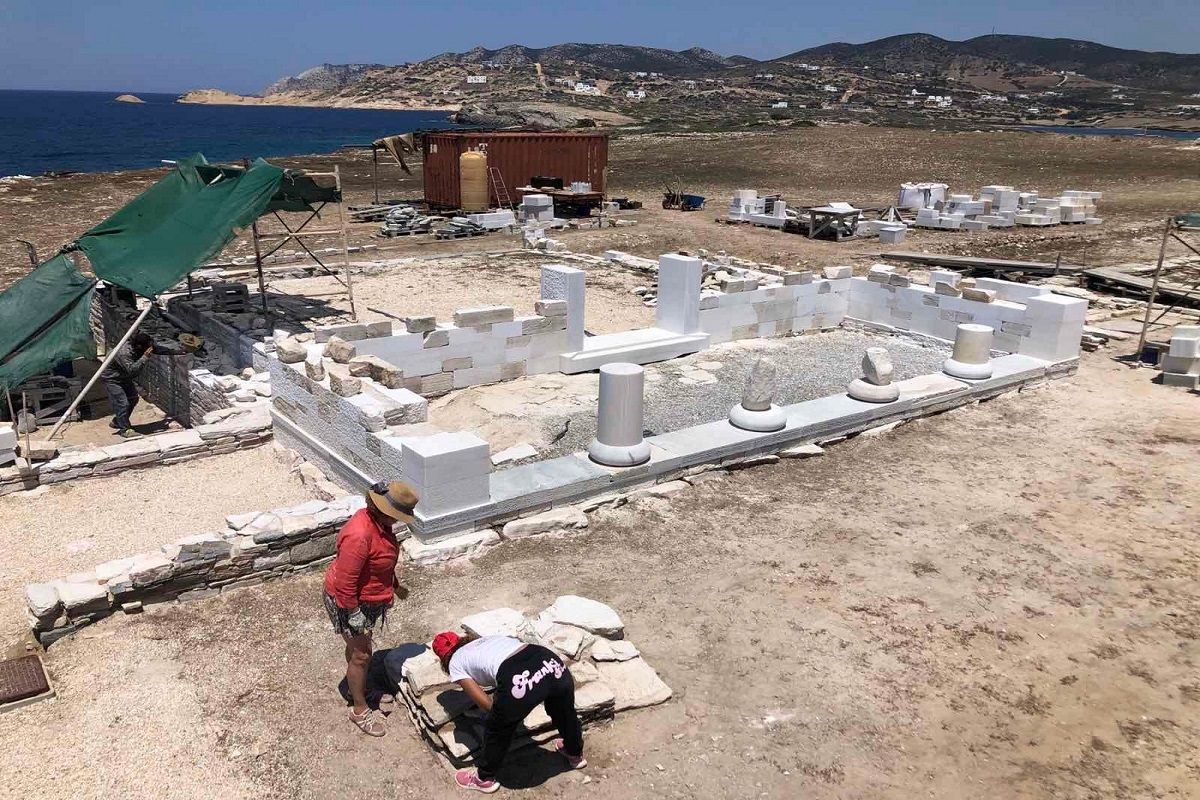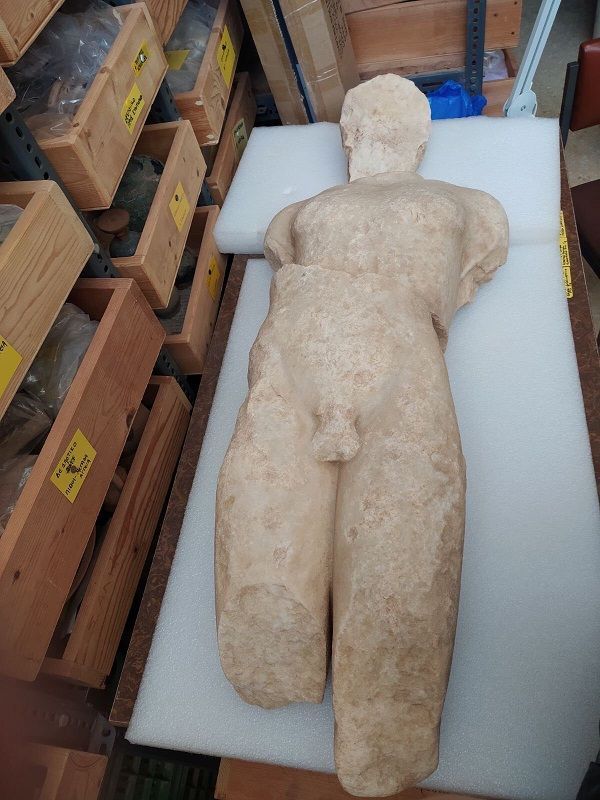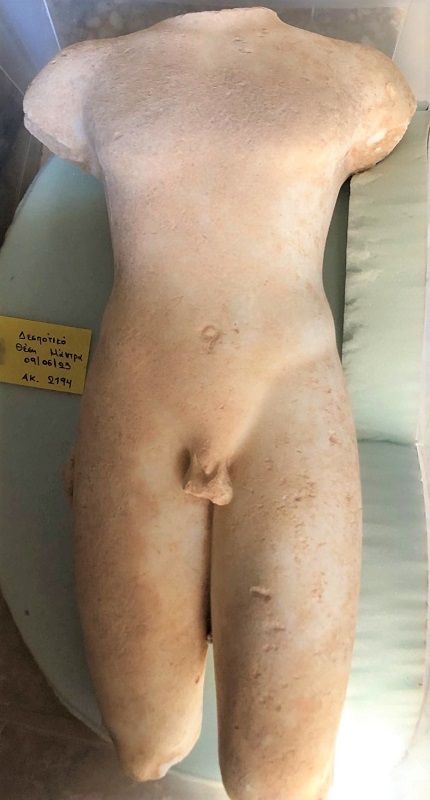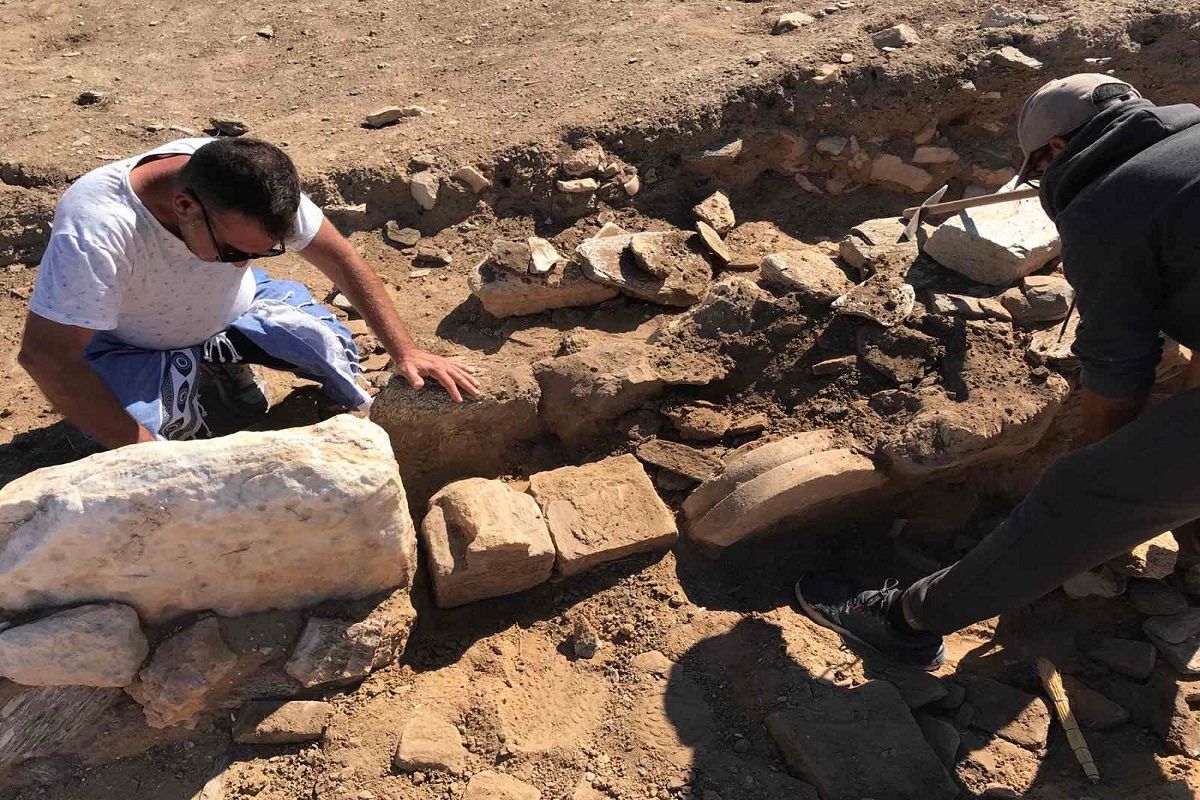Archaeology: Excavation on Despotikos Islet Unveils Important Findings
A headless marble Kouros sculpture is among the most important findings unearthed during this year’s excavation at the Mandra site of the island of Despotiko in the Cyclades group.
The excavation, which is being conducted by the Cycladic Ephorate of Antiquities, also revealed Archaic kouros statue fragments. Findings also included a complex water collection and management system at the foot of the hill to the south of the site’s Apollo sanctuary. This system includes two large tanks, two filtering rooms (“prolakkia” in Greek) and a 25-meter-long stone-built pipe.
- The archaic kouros. Photo source: Culture Ministry.
- The archaic kouros. Photo source: Culture Ministry.
The excavation at Mandra, which started in 1997, has transformed the small uninhabited islet of Despotiko into an open-air museum.
Until today it has revealed a number of important finds, including a Doric temple, a stoa, and a number of votive offerings.
The most important find from the site, according to the ministry, is the headless male torso that dates back to the late 5th century BC and stylistically refers to the Child of Cretius.
The sanctuary at Despotiko was in use from the 7th century BC to the 4th century AD. It is thought to have been a major religious center in the Cyclades during this period. The excavation of the site is ongoing and is expected to yield further important finds in the future.
In addition to its archaeological significance, Despotiko is also a popular destination for swimming, sunbathing, and hiking for tourists visiting Paros and Antiparos. The islet is home to a number of beautiful beaches, including Despotiko and Livadi. There are also a number of hiking trails that lead to the top of the islet, where there are stunning views of the surrounding islands.








